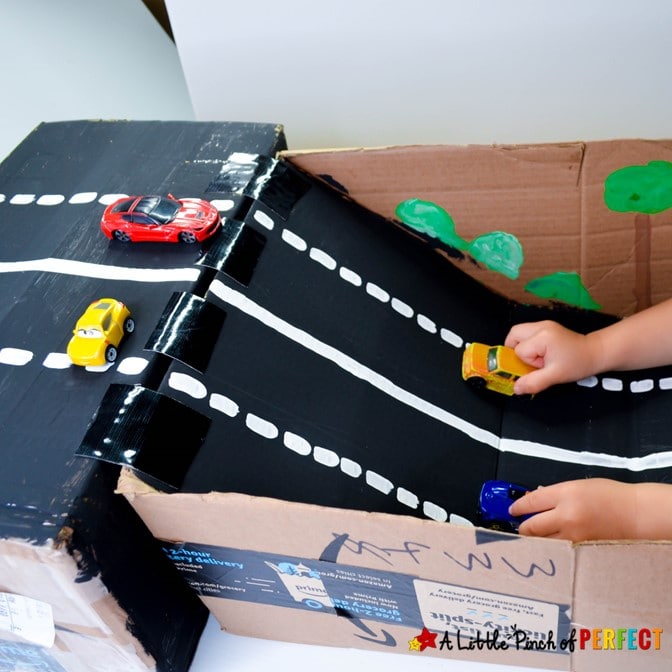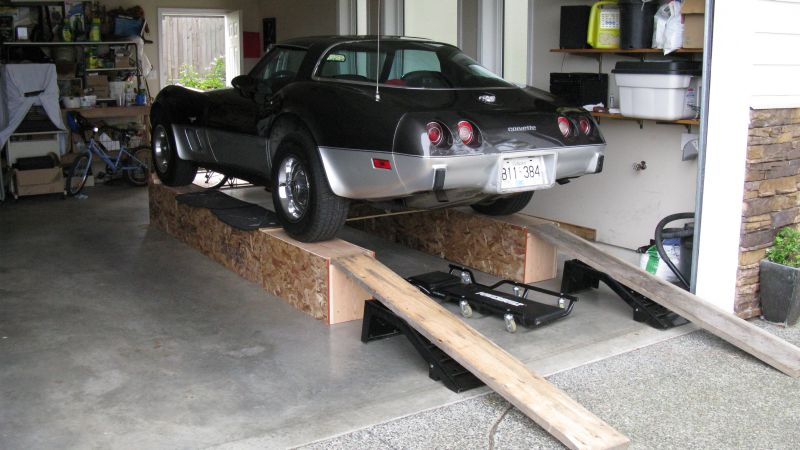Are you eager to learn how to assemble a car ramp? Whether you’re a DIY enthusiast or just someone looking to perform basic maintenance on your vehicle, having a sturdy car ramp is essential.
Imagine the satisfaction of effortlessly lifting your car, giving you easy access to its underbelly. By the end of this article, you’ll have the confidence and knowledge to assemble a car ramp like a pro. We’ll guide you step-by-step, ensuring you avoid common pitfalls and maximize safety.
Keep reading to discover how simple it is to put your ramp together and make your car maintenance tasks a breeze.
Materials And Tools Needed
Gather all the materials first. You need strong wooden planks. They must be sturdy. A drillis essential. It makes holes in the wood. Use a sawto cut the planks. Get some screwsto fix the wood together. A tape measurewill help. It measures the wood length. Use a spirit levelfor balance. It keeps the ramp even. Safety gloves are important. They protect your hands.
You also need a pencil. It marks where to cut. A screwdriver is useful. It tightens the screws. The right tools make the job easier. Always check your list. Make sure nothing is missing. Each tool has a purpose. It helps build a safe ramp.

Credit: alittlepinchofperfect.com
Choosing The Right Location
First, pick a flat and firm surface. Grass or dirt is not good. Use your driveway or a garage floor. The surface must be clean and dry. It helps the ramp stay steady. Keep away from busy roads. Safety is important. Ensure there is enough space around the car. This allows you to move freely. Check for any overhead obstacles. These could be tree branches or roof beams. Avoid parking on slopes. The car might roll. Always use wheel chocks for extra safety. Keep kids and pets away during the setup.
Safety Precautions
Safety is key when building a car ramp. Start by wearing gloves and safety glasses. These protect your hands and eyes. Keep your workspace clean and free of clutter. Make sure the ground is level and stable. This stops the ramp from sliding. Check all tools for damage before use. A broken tool can cause accidents. Read the ramp instructions carefully. Follow each step in order. It’s important to double-check each connection. Tighten bolts and screws securely. Loose parts can be dangerous. Have a partner help if you need it. Two people make the job safer. Test the ramp with a small load first. Ensure it holds steady. Safety first, always.
Preparing The Ramp Components
Gather all necessary toolsbefore starting. Ensure you have a wrench, screws, and bolts. Check each ramp piece for damage. Damaged parts can be unsafe. Lay parts out on the ground. This helps you see everything clearly.
Read the instruction manualcarefully. Each step is important. Follow them to avoid mistakes. Get help if needed. Two people can make this easier. Keep the area clean and tidy. Messy areas can cause accidents.
Assembling The Base
Place the parts on a flat surface. Make sure all parts are clean and straight. Arrange them in the order of use. Check each part’s labels for correct placement. This helps in avoiding mistakes. Align the parts carefully. Use a ruler for accuracy. Ensure all parts fit snugly together. Adjust if needed. Double-check your setup. A good start saves time later.
Use strong bolts to secure the base. Tighten each bolt firmly. Do not over-tighten. This can damage the parts. Use a wrench for better grip. Check each bolt twice. Stability is key for safety. Ensure no parts are loose. If needed, add more bolts. Test the base for strength. Press it lightly. It should stay steady. A secure base is essential for safe use.
Constructing The Ramp Surface
Start by placing the surface panelson the ramp frame. Use screws to attach them securely. Ensure each panel is tight and aligned. This prevents any gaps. Check each screw is tight. Loose screws might cause accidents. Repeat for all panels. This step is crucial for safety.
Stability is key for a safe ramp. Check the ramp’s balanceon the ground. Adjust the legs if needed. The ramp should not wobble. Use a level to check. This helps keep the ramp even. Test the ramp by applying some weight. It should hold strong. A stable ramp lasts longer.
Adding Safety Features
Assembling a car ramp requires attention to safety features. Securely install non-slip surfaces to prevent slipping. Ensure sturdy construction by using quality materials and double-checking connections.
Installing Guardrails
Guardrails keep the car safe on the ramp. Metal bars work well for guardrails. Attach them on each side. Use strong bolts to secure them. Check they do not move. Test them after installation. Guardrails should be high enough. They prevent the car from falling off. Always make sure they are in place.
Applying Non-slip Coating
Non-slip coating keeps wheels from slipping. Liquid rubber is a good choice. Apply it evenly. Cover the entire ramp surface. It must dry before use. A dry coat grips better. Check for smooth application. Make sure the surface is not too rough. This coating helps in wet conditions. Keep the ramp safe with this coating.
Testing The Ramp
Make sure the car ramp is on a flat surface. Check if all parts are tightly connected. Wobbling can lead to accidents. Try shaking the ramp gently. It should not move or sway. If it does, tighten all nuts and bolts. Check again to ensure stability.
Start with a small load. Use a heavy box or bag. Place it on the ramp. Watch for any signs of stress. Listen for creaks or cracks. If there are none, proceed with a heavier load. Gradually increase the weight. Make sure the ramp holds steady. Safety is important, so always test carefully.
Maintenance Tips
Regular checks keep your car ramp safe. Inspect the ramp for cracks or bends. Loose bolts can make ramps unsafe. Tighten them often. Clean the ramp after use. Dirt can make it slippery. Lubricate moving parts to prevent rust. Store the ramp in a dry place. Wet spots can damage it. Keep an eye on the weight limit. Overloading can break the ramp. Use ramps only on flat surfaces. Slopes can make them unstable. Replace worn-out parts quickly. This keeps the ramp strong.
Safety is important. Always wear gloves. Check if ramps are locked before driving up. Follow these tips for a long-lasting ramp.

Credit: www.eurorc.com

Credit: www.corvetteforum.com
Frequently Asked Questions
How To Set Up Car Ramps?
Place the car ramps on a flat, stable surface. Align ramps with the vehicle’s wheels. Drive slowly onto the ramps, ensuring proper alignment. Use wheel chocks on the rear tires for safety. Always double-check stability before performing maintenance.
How To Make A Ramp Step By Step?
To build a ramp, first measure the required slope and length. Cut wood to size for the frame. Assemble the frame with screws. Attach plywood or decking for the surface. Secure the ramp to the ground or structure. Check stability and ensure it’s safe for use.
Can I Use A 2×4 As A Car Ramp?
Using a 2×4 as a car ramp is unsafe. It cannot support the weight of a vehicle. Always use purpose-built ramps for safety.
How To Stop Car Ramps From Slipping?
Use rubber mats or grip pads under the ramps for stability. Ensure the ground is level and clean. Secure ramps with non-slip tape or anti-skid coatings. Check ramp surface for wear and replace if needed. Always drive slowly and cautiously onto ramps.
Conclusion
Building a car ramp is simpler than it seems. With clear steps, anyone can do it. Gather your tools. Follow the instructions carefully. Ensuring safety is crucial. Check each piece for stability. Test the ramp before use. This prevents accidents.
Use it on a flat surface. Store it properly when not in use. Regular checks keep it safe. Enjoy your new ramp! It’s practical and handy. Perfect for DIY enthusiasts. Now, you can manage car maintenance easily. A car ramp is a smart addition to any garage.
Hi I am Tamim Hasan, I am a normal person. I like to help people so I want to help you through the blog website. If anyone is benefiting through this blog website then you can help me by sharing comments.




